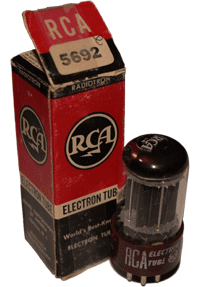 Simply put, a basic vacuum tube is much like a light bulb. In a light bulb, negatively charged electrons travel through the filament colliding into the surrounding atoms but in a vacuum tube the electrons jump off the filament onto a positively charged plate called an anode. This type of vacuum tube is called a diode. What it does is convert AC to DC. This basic idea has been around since 1904 and later perfected in 1907. Since then many variations have come and gone but the same basic concept hasnt changed. The tube you see to the right is an RCA 5692 triode tube from the 1950′s. My newest amp requires three of them on the input side but more of that later.
Simply put, a basic vacuum tube is much like a light bulb. In a light bulb, negatively charged electrons travel through the filament colliding into the surrounding atoms but in a vacuum tube the electrons jump off the filament onto a positively charged plate called an anode. This type of vacuum tube is called a diode. What it does is convert AC to DC. This basic idea has been around since 1904 and later perfected in 1907. Since then many variations have come and gone but the same basic concept hasnt changed. The tube you see to the right is an RCA 5692 triode tube from the 1950′s. My newest amp requires three of them on the input side but more of that later.
Over the past 100 years they have appeared everywhere in world of science and technology. They were in televisions, radios, radar, tanks, phone networks, stereos, and really almost everywhere. They eventually became the backbone for the first computers. Today, most tubes have been replaced with much the much smaller and modern semiconductors we see today. Nowadays they are often found among radio enthusiasts, high-end or vintage stereos, and in guitar amps.
So whats so great about vacuum tubes in an amplifier?
It really depends on who you ask. This has been a long drawn and heavily debated issue ever since the first solid-state stereos were introduced in the 70′s. For me, I like all things vintage. Especially vintage technology. I love their simplicity, their nostalgic character, and the attention to detail you get from a hand built piece of equipment. For just the engineering reasons alone I love them. All that being said, they sound wonderful! They are warm and rich and deep. The sound can be so real and the stage so perfect that Neil Young’s harmonica sounds like its next to you and Stevie Nix is singing in your living room.
For me, its a really the entire experience; the charm and character that they bring along with a good piece of vinyl is amazing. The solid-state guys say that the sound isnt right due to the electron cloud inside the tube which is responsible for amplifying the sound. The analog guys claim its reality, its lifelike, and a lot of music was recorded this way since the beginning. Either way, I seem to enjoy them.
What is an RCA 5692 tube and more importantly, what is a triode?!
Lets not worry to much about the RCA tube you see above and look more at what a triode itself is. There were so many different ones built from so many countries over so many years it can be dizzying. All that really matters is that they are like cars. Some were well built and some were not.
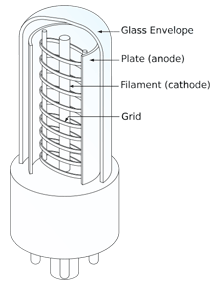 To the left is a basic diagram of a triode vacuum tube (thank you Wikipedia). The main difference here between a diode and a triode is the grid surrounding the filament.
To the left is a basic diagram of a triode vacuum tube (thank you Wikipedia). The main difference here between a diode and a triode is the grid surrounding the filament.
Remember that the filament is emitting negatively charged electrons that are picked up by the anode, but in a triode tube, there is a grid or screen in between. By applying a negative charge to this grid you can control the amount of electrons that will contact the anode.
There is a lot goes into the circuit topology the dictates how to charge the grid but thats another story for another day. The two amplifiers I currently have are both powered by triodes, both on the input and output side, but their design differs in the way the tubes are implemented.
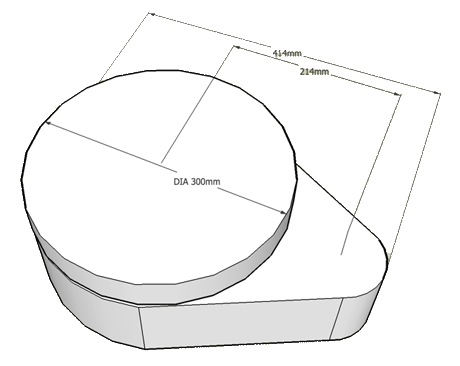
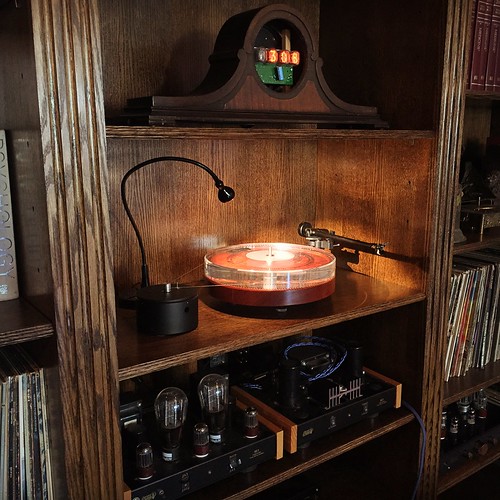
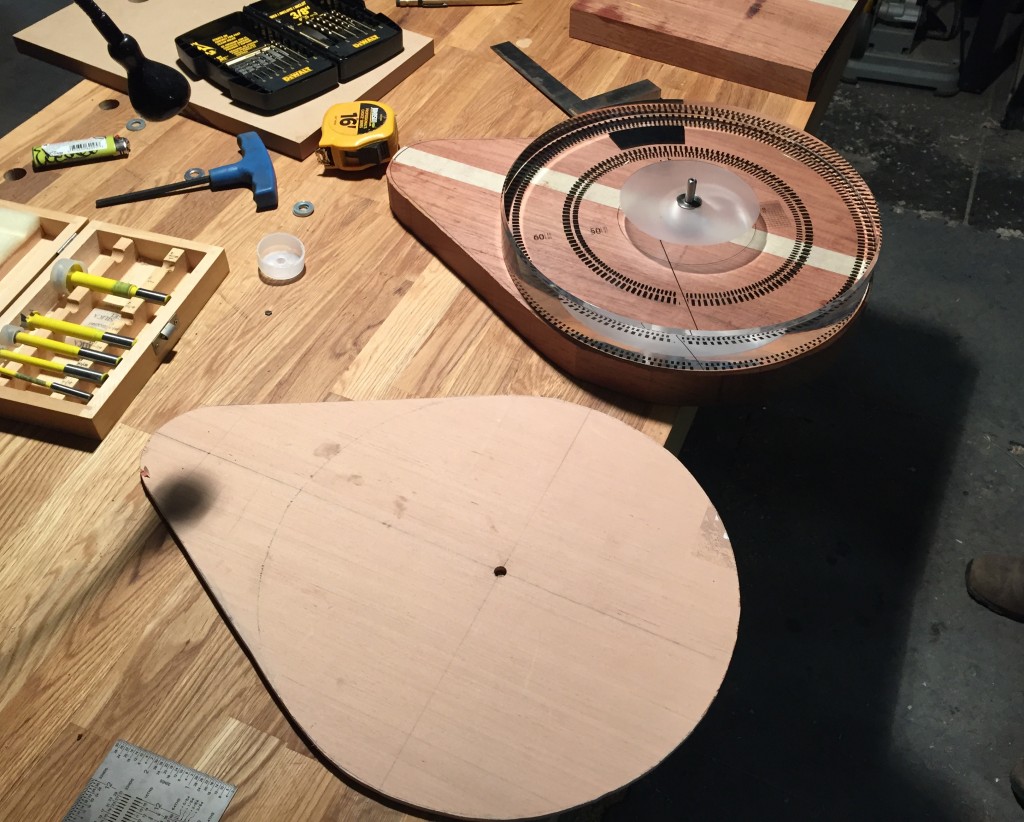
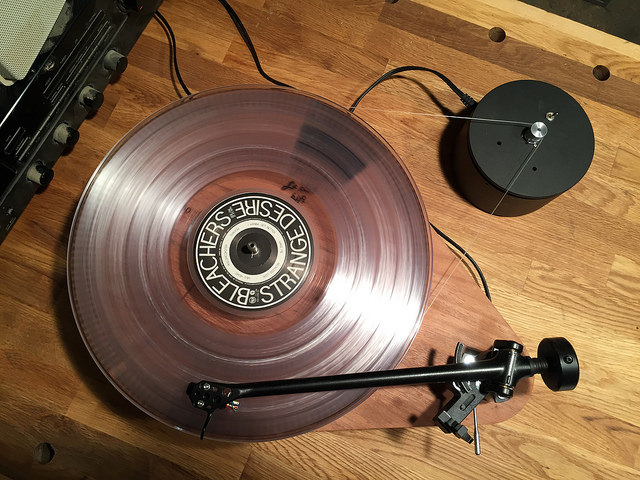
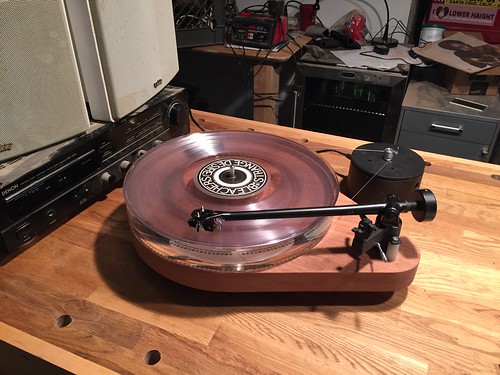
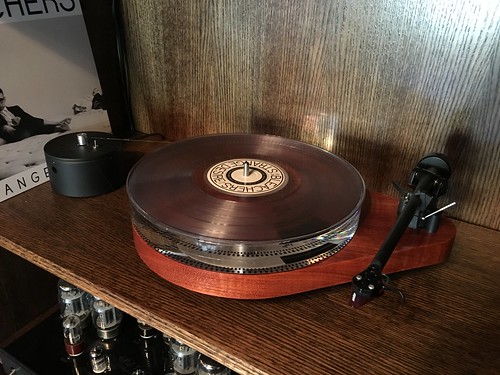
 Simply put, a basic vacuum tube is much like a light bulb. In a light bulb, negatively charged electrons travel through the filament colliding into the surrounding atoms but in a vacuum tube the electrons jump off the filament onto a positively charged plate called an anode. This type of vacuum tube is called a diode. What it does is convert AC to DC. This basic idea has been around since 1904 and later perfected in 1907. Since then many variations have come and gone but the same basic concept hasnt changed. The tube you see to the right is an RCA 5692 triode tube from the 1950′s. My newest amp requires three of them on the input side but more of that later.
Simply put, a basic vacuum tube is much like a light bulb. In a light bulb, negatively charged electrons travel through the filament colliding into the surrounding atoms but in a vacuum tube the electrons jump off the filament onto a positively charged plate called an anode. This type of vacuum tube is called a diode. What it does is convert AC to DC. This basic idea has been around since 1904 and later perfected in 1907. Since then many variations have come and gone but the same basic concept hasnt changed. The tube you see to the right is an RCA 5692 triode tube from the 1950′s. My newest amp requires three of them on the input side but more of that later. To the left is a basic diagram of a triode vacuum tube (thank you Wikipedia). The main difference here between a diode and a triode is the grid surrounding the filament.
To the left is a basic diagram of a triode vacuum tube (thank you Wikipedia). The main difference here between a diode and a triode is the grid surrounding the filament. 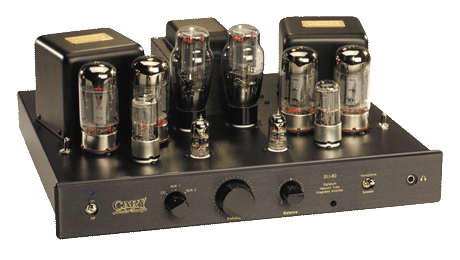 For a long time now I have been interested in vacuum tubes. I love their simplicity, sound, and the fact that the design hasnt changed since the early 1900′s. They also were used as transistors in early computers before the solid state transistor was invented. 50 years ago it would take an entire room of these to power a computer with less memory than a Casio wristwatch.
For a long time now I have been interested in vacuum tubes. I love their simplicity, sound, and the fact that the design hasnt changed since the early 1900′s. They also were used as transistors in early computers before the solid state transistor was invented. 50 years ago it would take an entire room of these to power a computer with less memory than a Casio wristwatch.